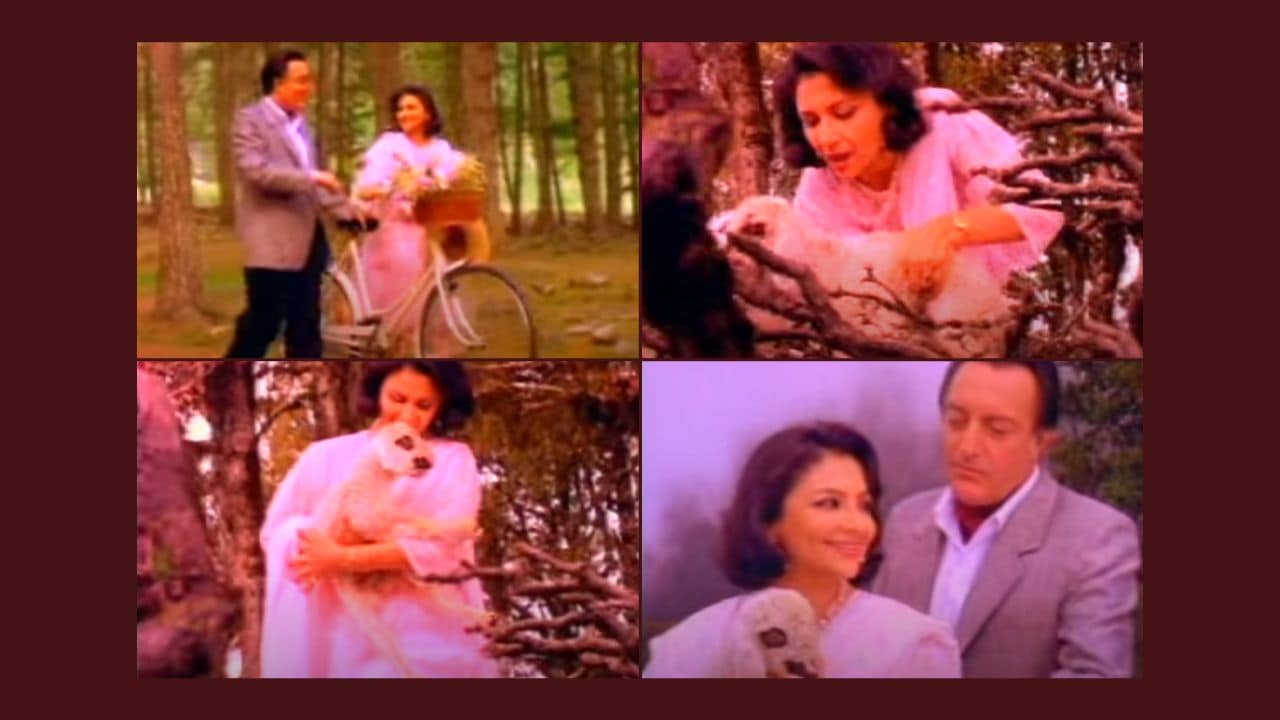Year 1990. Veteran actor Sharmila Tagore and former captain of Indian cricket team, late Mansoor Ali Khan Pataudi, are seen walking in nature. As they walk hand- in-hand amidst a flock of lamb up in the mountains, they spot one in distress, and Tagore comes to its rescue. The scene ends with the promotion of Grasim Gwalior Suiting’s Terene wool.
The commercial went on to grace the television screens for seven years.
Conceptualisation of the commercial
Gwalior Suitings, known as Grasim Suitings now, was established in 1947. Raymond, whose institution was cemented in 1925, proved to be the only competitor then. The former was very much popular in northern India, compared to the latter, which had a western feel.
Mapp Advertising was involved in the marketing and advertising of the brand. Its print ads were considered generic. However, when Brendan Pereira joined the agency as a creative consultant, things began to take a turn for the better.
Witnessing the way things were shaping up for Gwalior Suitings, Pereira suggested to the agency that it should venture into a route that highlighted the brand’s distinctiveness, and did not reduce Gwalior Suitings to being seen as a Marwadi suiting.
In 1986, George Mangalath Thomas joined Mapp Advertising as a junior copywriter. He worked his way up and caught the eye of Pereira, who entrusted Thomas with the responsibility of building the brand. Thomas churned a variety of print ads but his heart was always in making films. And 1987 marked the year which began with making of a corporate film for Gwalior Suitings. It went on to be well received.
Thomas shot a series of four advertisements featuring the Pataudi couple starting from 1988 until 1990. The television commercial turned the fortunes for the brand.
There is a little story behind this ad. The brand, which was owned by the Birlas, had to be persuaded to conduct a market research. Eventually, when the research was conducted in 1989, it was found that Tagore was more popular than Pataudi. That’s why the ad featured the Pataudi couple.
In a conversation with Storyboard18, Thomas said, “The research highlighted that everybody remembered her, whenever she was in the frame. So that’s why in the film I did in 1990, I made sure that I put her in every single frame.”
Making of the commercial
Thomas penned the script for the commercial. By 1990, Pereira had exited from the scene, under whom everything was materialising. Josy Paul (now chairman and chief creative officer, BBDO India) and Neville D’Souza had joined the agency as a creative duo. They suggested the inclusion of a lamb in the frame as the aim was to push the brand as a wool suiting.
The shooting took place at Shoja, a village which links Shimla and Kullu districts in Himachal Pradesh. On the first day of the shoot, Tagore walked up to Thomas and expressed a problem. Tagore, whose hair was naturally curly, always appeared to the shoots in straightened hair. Since her hair began to curl up, she presented a solution.
The veteran actor requested Thomas to get a large suitcase full of batteries. She had a contraption that took eight batteries at a time. She had those hair curlers, and, during rehearsals, they would be on her hair. Just before the shot, the curlers would be removed by the hairdresser and her hair would be combed up to give it a straightened look. And then, it would be put back right after the shot. Tagore was also the designer of her own costumes for the film.
The film was shot by cinematographer Vikas Sivaraman, and the music was composed by Leslie Lewis. The print ads too were written by Thomas. Former photographer Denzil Sequeira did the photography. In the print campaign, the Pataudi was featured in at least 40 suits.
The commercial, which was shot on a 30 mm film and released on Doordarshan, went on to grace the cinema screens, too. “Cinema advertising was very popular during that period. We did 60 second versions for the cinemas. Thirty seconds, some 45 seconds and 15 seconds for television,” Thomas stated.
When the ad was released, it tasted critical and commercial success. Thomas recalls an anecdote. Post the commercial’s release, when Thomas visited retailers at the Gwalior factory, they revealed that people wanted to make their first suit out of Gwalior Suitings, in reference to the particular suit Pataudi had worn. People would take a cutting of the print ad, go to the shop saying ‘Yeh chahiye’.
Evolution of celebrity endorsements: Then v/s now
About the same time the commercial was being filmed, Pataudi was also appearing in another commercial endorsing a coffee brand. The reason Tagore was roped in every frame was to avoid confusion among the audience. Thomas mentioned, “When celebrities do that, there is a lot of confusion as to what they are advertising. The same person is appearing for 10 different things, and there is no clue as to what he or she is doing.”
The campaign was regarded as the early pioneers of celebrity advertising. Thomas also touched upon the perils of celebrity advertising. The fortunes of a brand rise and fall with the celebrity. Tomorrow, if he or she is caught doing something that doesn’t go down well among people, the implications are likely to affect the brand, concludes George.
